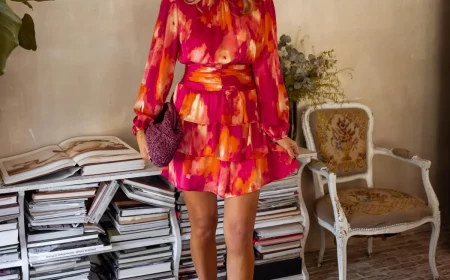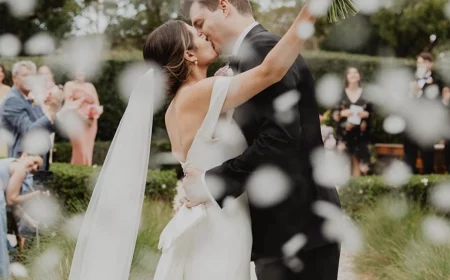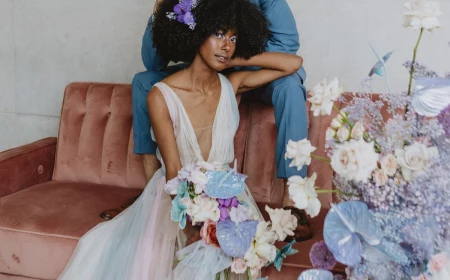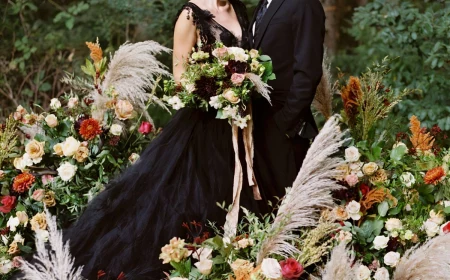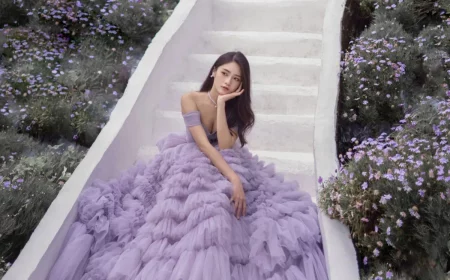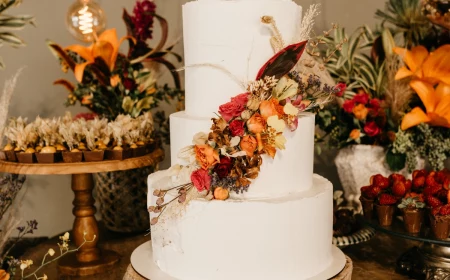Thinking About an Orchid Wedding Bouquet? Here’s What Your Florist Wants You to Know
I’ll never forget the first time I held a stem of Phalaenopsis orchids. I was just an apprentice, and my mentor handed it to me, telling me to wire it for a corsage. The petals felt like velvet-covered porcelain—so perfect and intimidating. I was terrified I’d snap the stem or bruise those flawless petals. Honestly, that deep respect for the flower has stuck with me for my entire career.
In this article
- First, Let’s Talk About the Flower Itself
- The Orchid’s Kryptonite: A Hidden Danger
- How We Actually Build an Orchid Bouquet
- Hand-Tied vs. Fully-Wired: What’s the Difference?
- A Word on Blue Orchids…
- The Nitty-Gritty: Budget, Timing, and Finding Your Florist
- How to Hire the Right Pro
- After the “I Do’s”
- Galerie d’inspiration
Orchids aren’t like other flowers. They’re living sculptures that demand a whole different level of understanding and skill.
Brides often bring me these gorgeous inspiration photos of orchid bouquets, and I get it. The clean lines, the exotic grace… it’s captivating. But an orchid bouquet is so much more than a pretty picture; it’s a technical masterpiece. Choosing orchids is a fantastic decision, but it helps to be in the know. You should understand which orchid is right for your vision, how it needs to be handled, and frankly, why it costs more than a bundle of roses. So, let’s pull back the curtain on how these bouquets are really made, the challenges involved, and how to make sure yours is perfect from the first photo to the last dance.
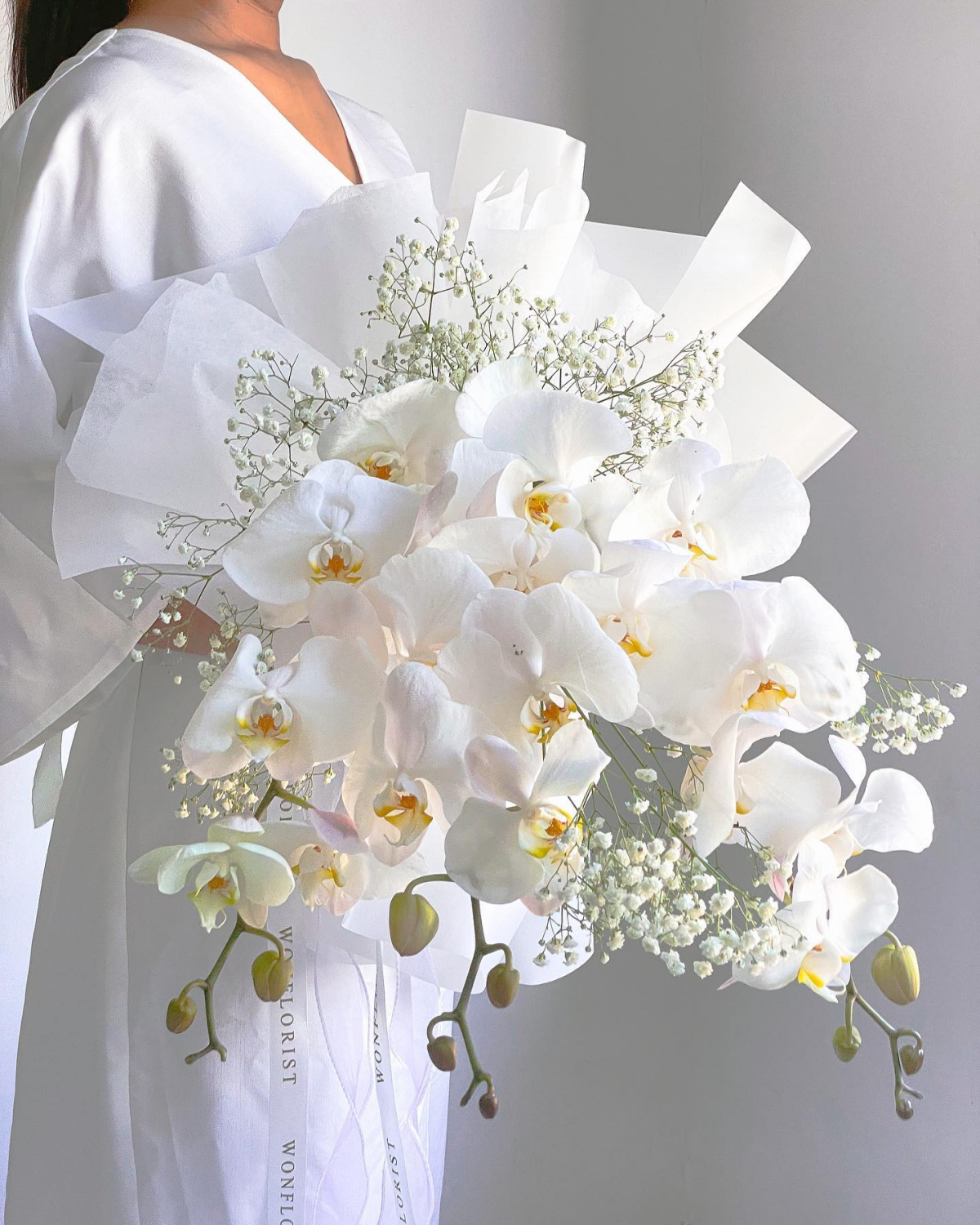
First, Let’s Talk About the Flower Itself
Before we even think about design, you have to understand the plant. Most orchids we use in floral design are epiphytes. In simple terms, this means they naturally grow on other things, like tree bark, not in soil. Their roots are made to cling and pull moisture from the humid air. This is the secret to their incredible resilience and why a cut orchid can look amazing for so long without being in a vase. It’s built for it!
You’ll mostly see a few key players in the wedding world, and each has its own personality.
- For that classic, cascading look, Phalaenopsis (or Moth Orchid) is the star. These have those big, flat-faced, elegant blooms that create a waterfall effect. They are stunning but have broad petals that can bruise if you’re not careful.
- Then there’s Dendrobium, the absolute workhorse of the orchid family. They come in long sprays with tons of smaller flowers, are super durable, and are available in a huge range of colors. We use these to build the flowing lines in big bouquets.
- If you need something tough, Cymbidium is your flower. Their petals are waxy and almost indestructible, lasting for hours out of water with no issues. They’re a bit more compact and work beautifully in hand-tied bouquets or boutonnieres. Good to know: they are most available and look their best in the cooler months.
- For pure drama, you have Vanda orchids. These are the true showstoppers with vibrant, often speckled or webbed patterns. They are more delicate and come with a higher price tag (often $25-$50+ per stem), so we usually use them as a jaw-dropping focal point.
- And of course, the Cattleya, or the classic “corsage orchid.” They’re big, often fragrant, and beautifully ruffled. But they’re also quite fragile and need an expert’s touch to wire and support their heavy heads.
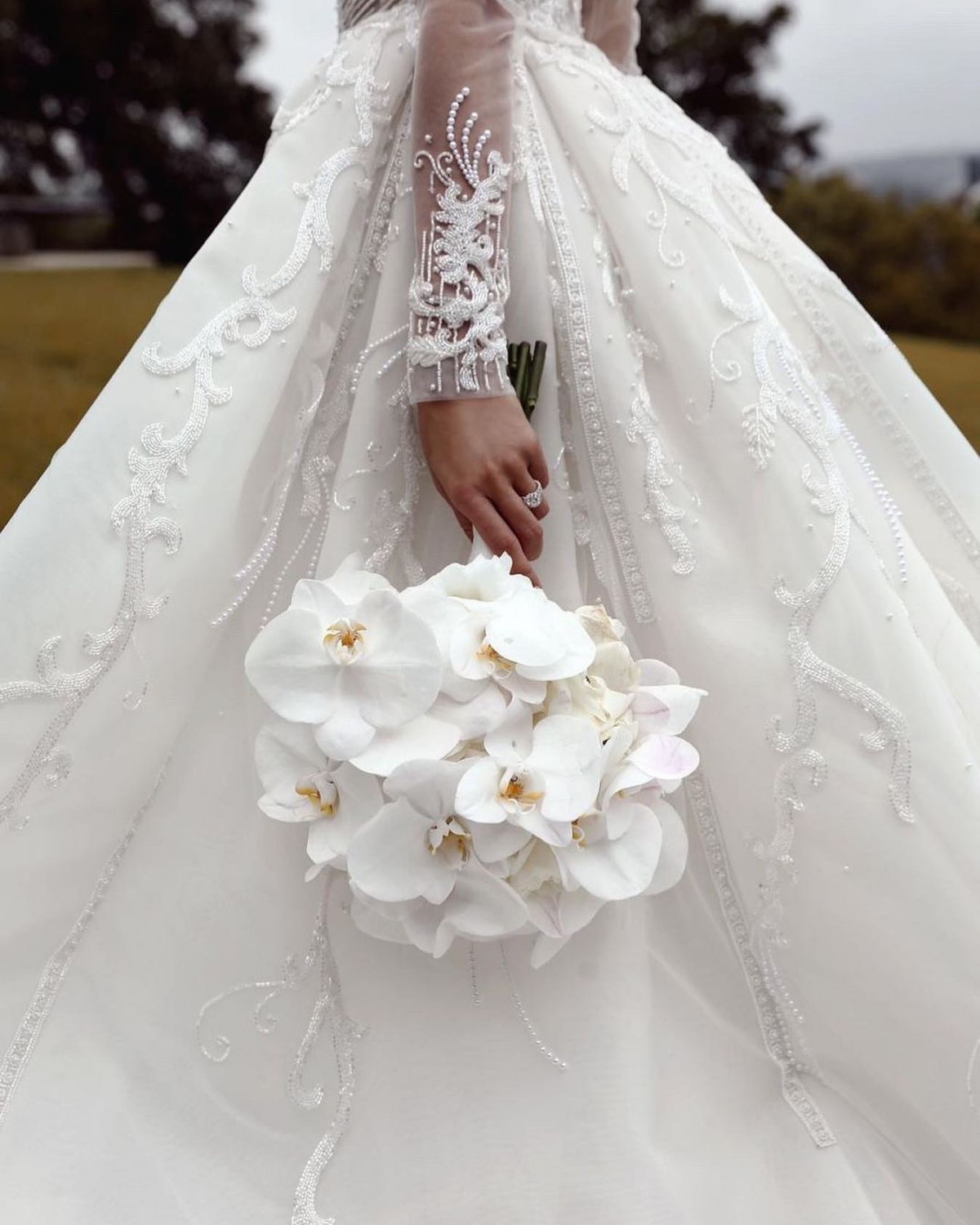
The Orchid’s Kryptonite: A Hidden Danger
Orchids have a waxy coating on their petals that prevents water loss, which is why they feel so different from a soft rose. It’s a natural armor. However, they have one critical weakness: ethylene gas. Think of it as the orchid’s arch-nemesis.
Ethylene is a colorless, odorless gas that plants release as they age. It’s heavily produced by ripening fruit—think apples, avocados, and especially bananas. To an orchid, a whiff of ethylene is a signal to age rapidly and drop its flowers. This is called “shattering.” I’ll never forget the bride who called me in a panic because her perfect Dendrobium bouquet had dropped half its blooms. After a few questions, we found the culprit: her mom had put the bouquet in the car next to a bag of bananas for the bridal suite. It was a powerful, and heartbreaking, reminder of the invisible science at play.
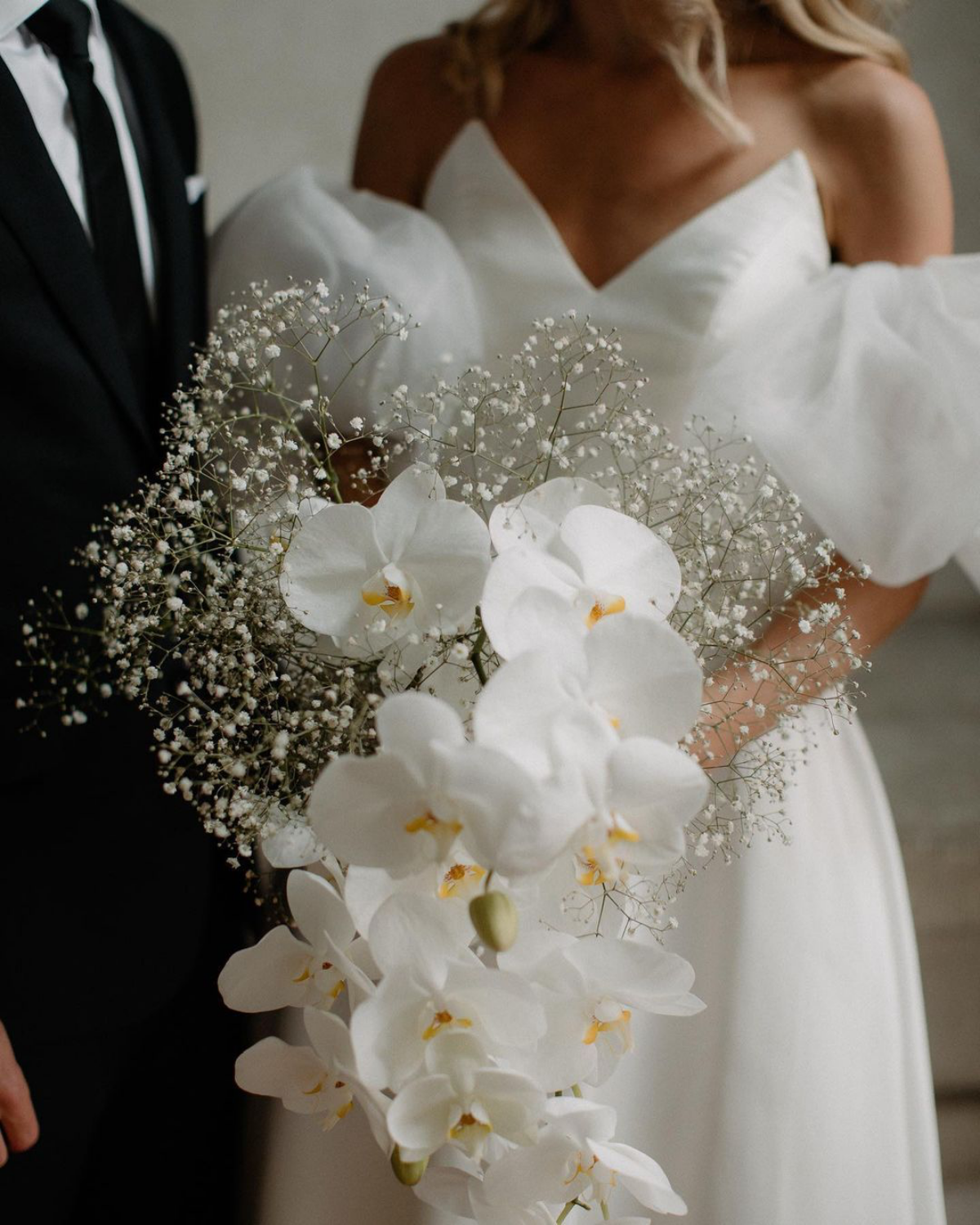
How We Actually Build an Orchid Bouquet
A show-stopping orchid bouquet is almost never just a bunch of flowers tied with a ribbon. It’s meticulously constructed, bloom by bloom. This is where the time, skill, and cost come from.
Our work starts the moment the boxes arrive from the wholesaler. We inspect every single bloom for bruises or cold damage. Then, they go into a special cooler set to about 50-55°F. Heads up! A standard flower cooler used for roses is actually too cold for most tropical orchids and can damage them.
The real magic is in the wiring and taping. To create those beautiful cascades, we replace the orchid’s clunky natural stem with a flexible, fabric-covered wire. This gives us total control over the angle of every single flower. It’s a delicate process of piercing the base of the bloom and carefully wrapping it with special floral tape that sticks to itself. A big cascading bouquet might contain over 50 individually wired blooms. This is easily the hardest skill to teach an apprentice; too much pressure and the flower snaps right off.
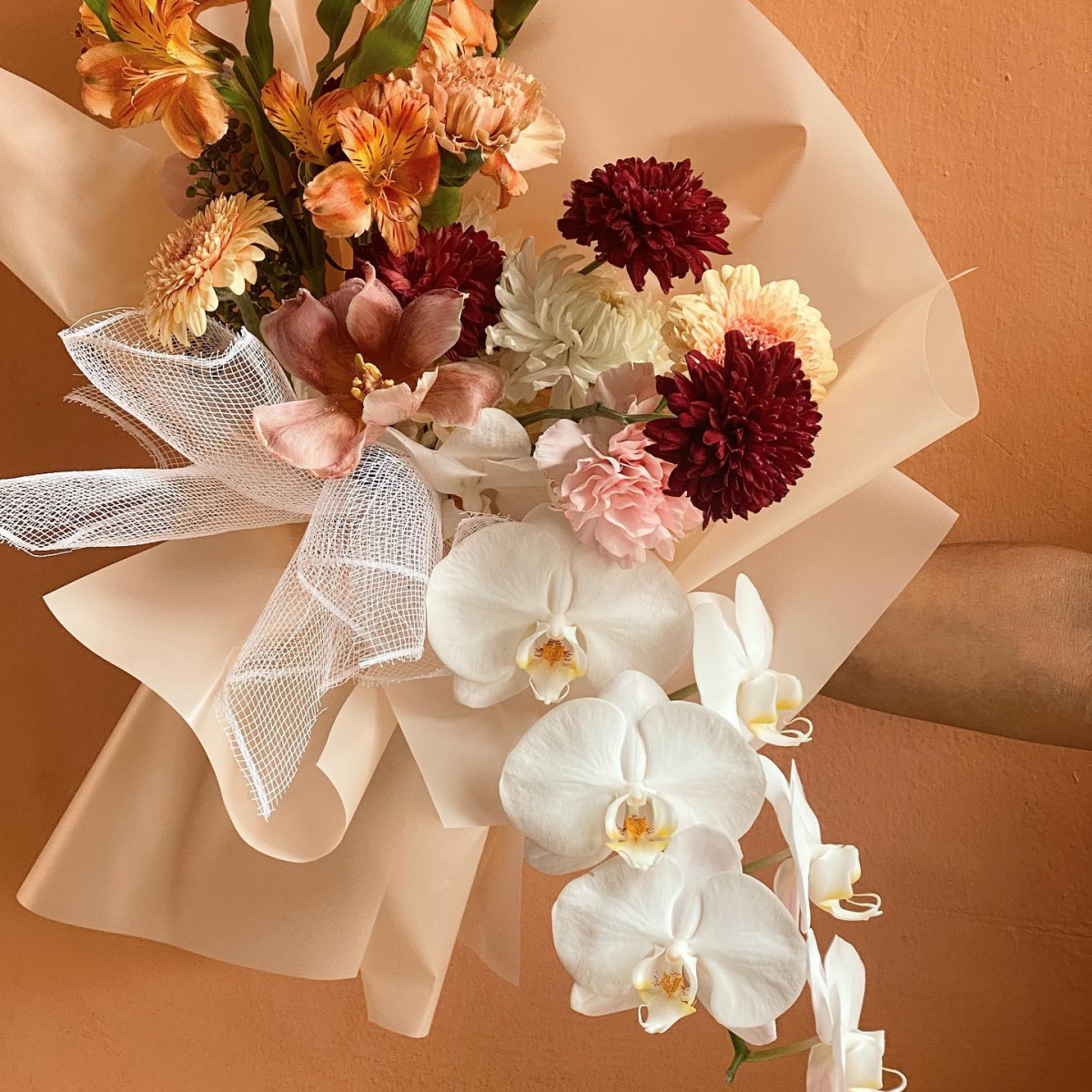
Since the natural stem is gone, each wired flower needs its own little water source. We usually wrap a tiny piece of water-soaked cotton around the base and seal it with parafilm. This creates a mini hydration pack for each bloom, ensuring it lasts all day.
Hand-Tied vs. Fully-Wired: What’s the Difference?
You’ve basically got two main construction styles, and the one you choose affects the look, feel, and price.
A hand-tied bouquet has a more natural, “gathered” feel. This works great with sturdy-stemmed orchids like Cymbidiums. The florist arranges the stems by hand and wraps them with ribbon. It’s a faster and generally less expensive method, perfect for a modern or garden-style wedding.
A fully wired and taped bouquet is the standard for classic cascades. Each flower is individually prepared and inserted into a special holder with floral foam. This allows for a lighter, more intricate, and perfectly shaped design. But be prepared… a large, dense cascade can still be surprisingly heavy! We’re talking 5 to 7 pounds, which can feel like a real arm workout after an hour of photos.

A Word on Blue Orchids…
Let’s have a frank conversation. Those electric, vibrant blue orchids you see online are almost always white Phalaenopsis that have been artificially dyed by injecting color into the plant as it grows. There are some naturally occurring purplish-blue Vanda orchids, but they are a much more subtle, deep hue and are extremely rare and expensive.
Heads up! The dye in those blue orchids can, and often does, bleed. If the bouquet gets even a little damp from humidity or a few raindrops, that blue dye can drip right onto a pristine white wedding dress. It’s a huge risk. If a client is absolutely set on them, I make sure they understand this and we take extra precautions, but it’s something you must know before you fall in love with the look.
The Nitty-Gritty: Budget, Timing, and Finding Your Florist
An orchid bouquet is an investment in artistry, so it’s important to be realistic. Orchids take a long time to grow and have to be shipped carefully from specialized farms. But the biggest factor in the price is labor. A fully wired bouquet can take a skilled designer hours to build. You aren’t just paying for flowers; you’re paying for expertise.
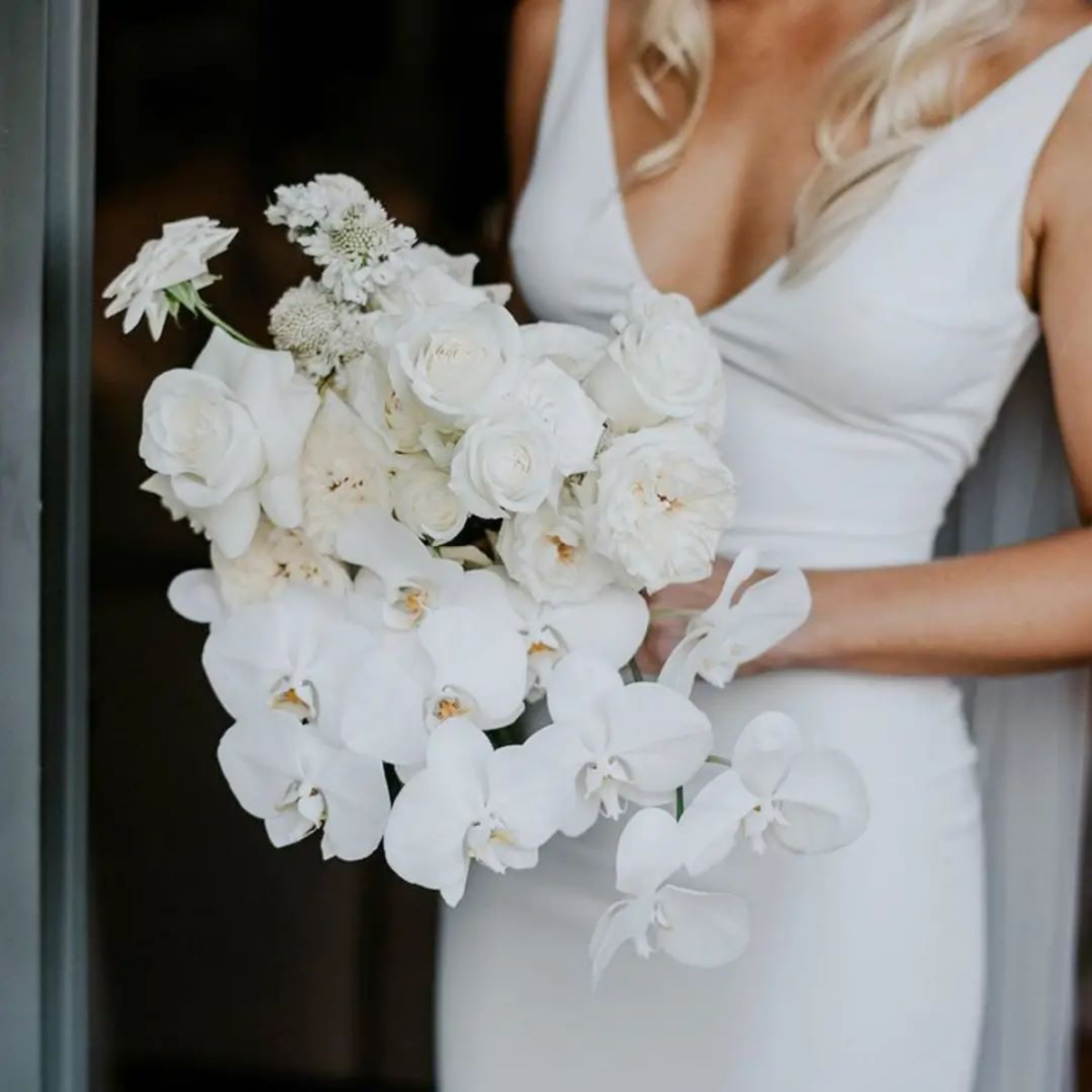
To save money, consider using orchids as a high-impact accent. A gorgeous bouquet of hydrangeas and roses with just three or four stunning Cymbidium or Phalaenopsis orchids tucked in can be just as breathtaking as a full orchid bouquet. This simple trick can be the difference between a $900 all-orchid cascade and a $450 mixed bouquet with a few show-stopping orchid “jewels.”
If you have your heart set on a specific or complex orchid design, you should book your florist 8 to 12 months in advance. This gives us plenty of time to source the perfect blooms for you.
And while I love the DIY spirit, a wedding bouquet is not the place to experiment. Could you make a simple hand-tied bunch of Dendrobiums? Probably. Should you attempt a wired Phalaenopsis cascade? I’d strongly advise against it. The risk of it falling apart mid-ceremony is real. If you’re absolutely dead set on trying, find a local wholesale flower market that’s open to the public, but buy at least twice what you think you’ll need to account for practice and inevitable mistakes.
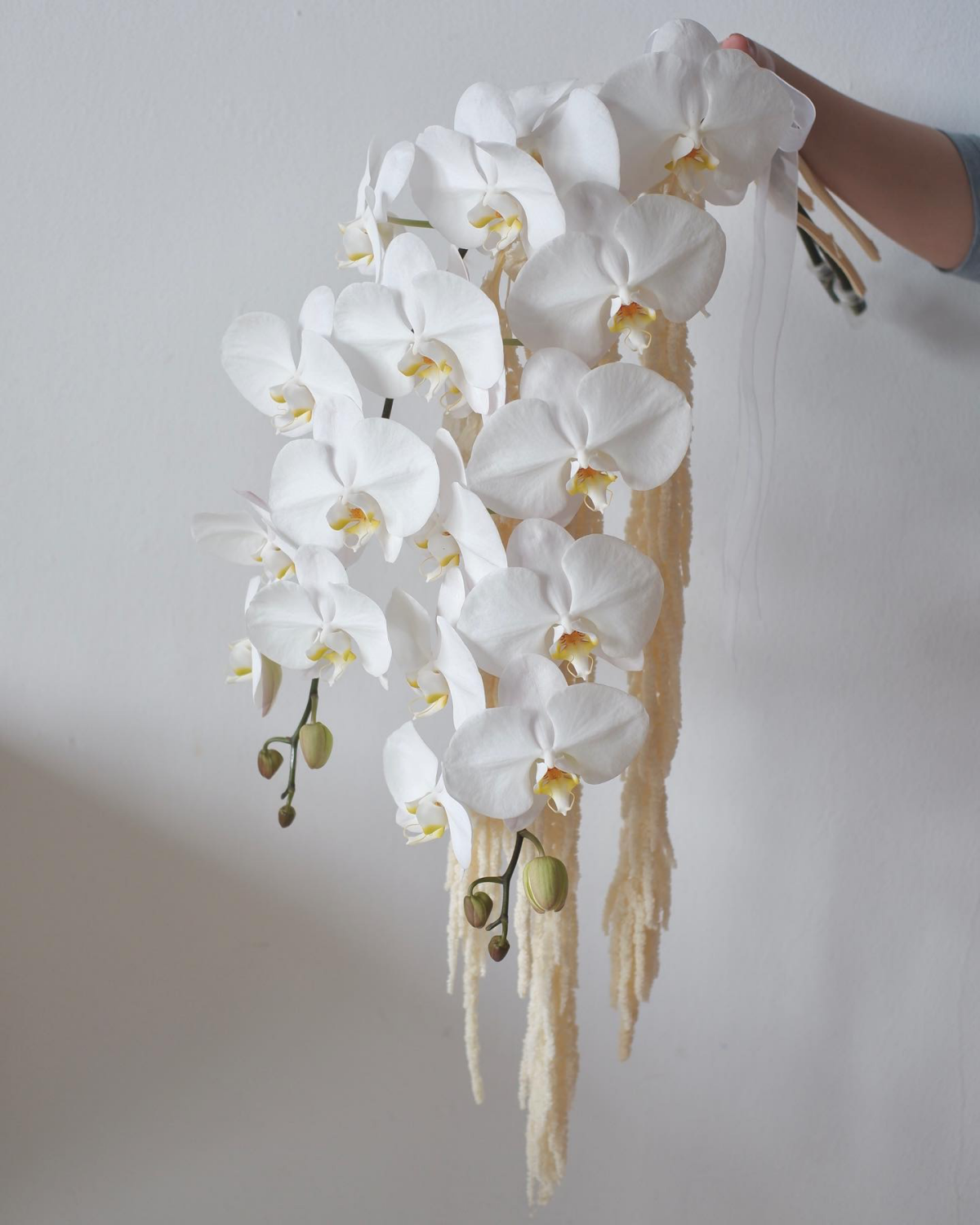
How to Hire the Right Pro
Not all florists are orchid wizards. To make sure you’re hiring someone with real expertise, here are a few key questions to ask:
- Can I see photos of other orchid bouquets you’ve personally designed?
- How do you process and store your orchids when they arrive? (Look for mentions of a separate, warmer cooler or specific conditioning methods).
- What is your backup plan if the orchids I want arrive damaged or are unavailable?
After the “I Do’s”
Your florist should deliver your bouquet in water. Keep it in a cool room, away from direct sun and any fruit bowls, until it’s showtime. When you hold it, try to only touch the ribbon-wrapped handle, as the oils from your hands can cause the petals to brown over time.
Oh, and one last thing! So many people ask about preserving their bouquet. And yes, you can absolutely get these preserved! The process is a bit different for waxy orchids, so ask your florist for a recommendation for a preservation specialist they trust.
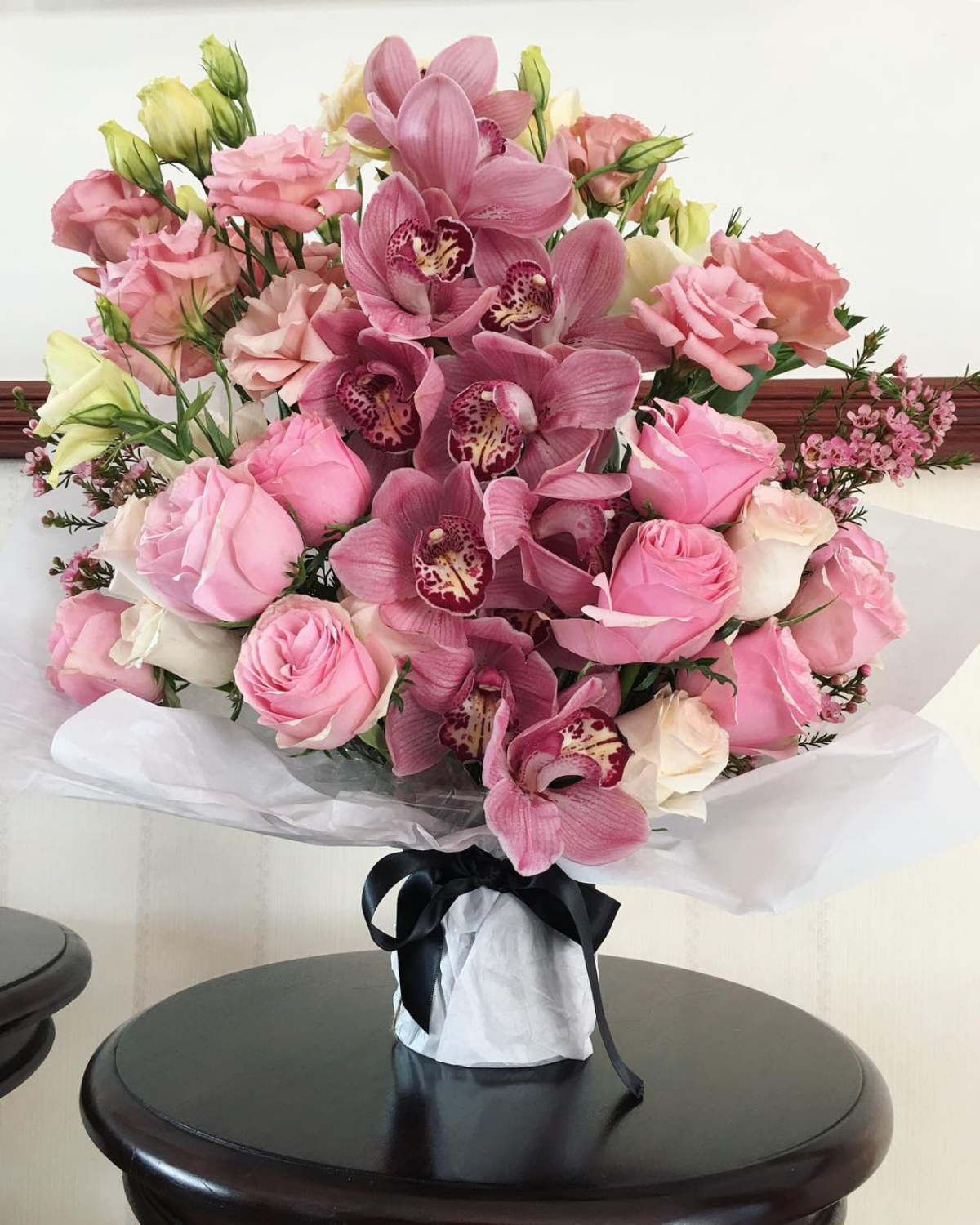
Choosing an orchid bouquet is about choosing a piece of living art. It’s a statement of elegance and style that, when created with skill and care, becomes a truly unforgettable part of your day.
Galerie d’inspiration
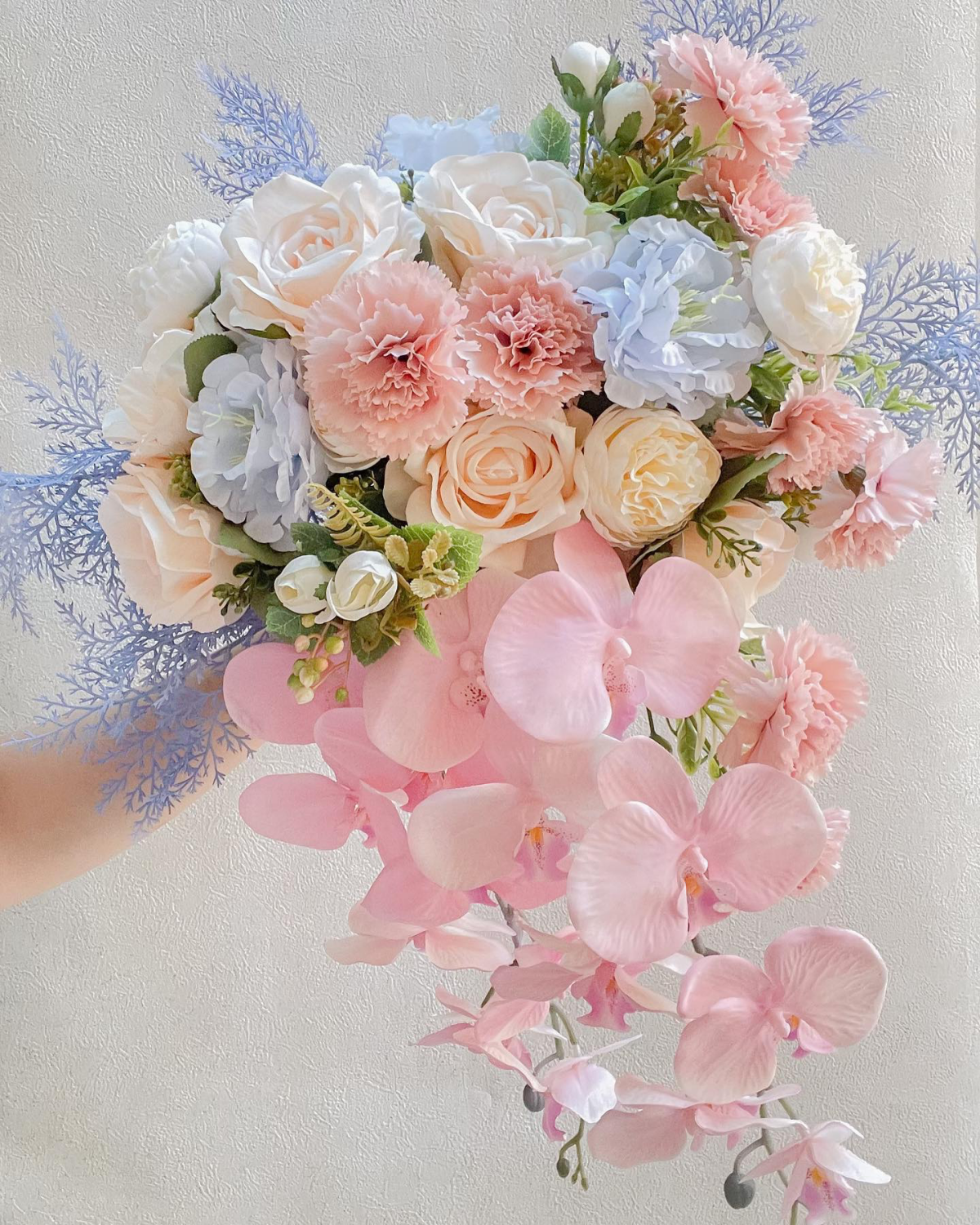

- Each bloom is perfectly positioned, creating flawless visual lines.
- The bouquet is surprisingly lightweight and easy to hold for hours.
- It will withstand photos, hugs, and even a turn on the dance floor without drooping.
The secret to these benefits isn’t magic, but meticulous craftsmanship. Your florist individually wires and tapes almost every single orchid, a time-consuming technique that ensures total control over placement and incredible durability.
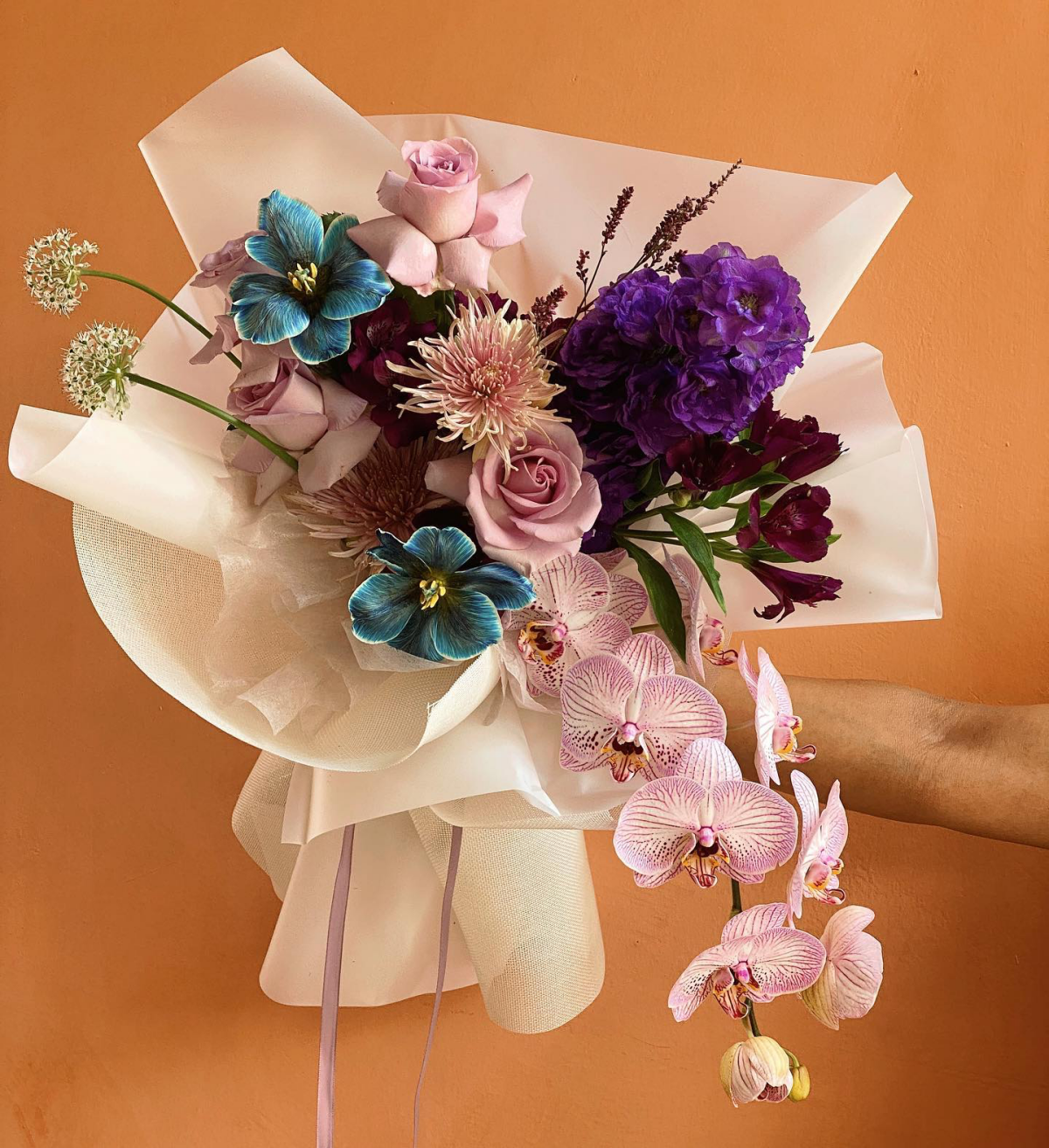
Orchid Bouquet: The cost is driven by the price per stem of premium orchids (like Phalaenopsis) and, crucially, the hours of skilled labor required for wiring and construction.
Rose Bouquet: The cost is primarily based on the quantity and variety of roses. Construction is typically faster, involving arranging stems in a hand-tied fashion.
While both are beautiful, the orchid bouquet is an investment in floral architecture as much as in the flowers themselves.
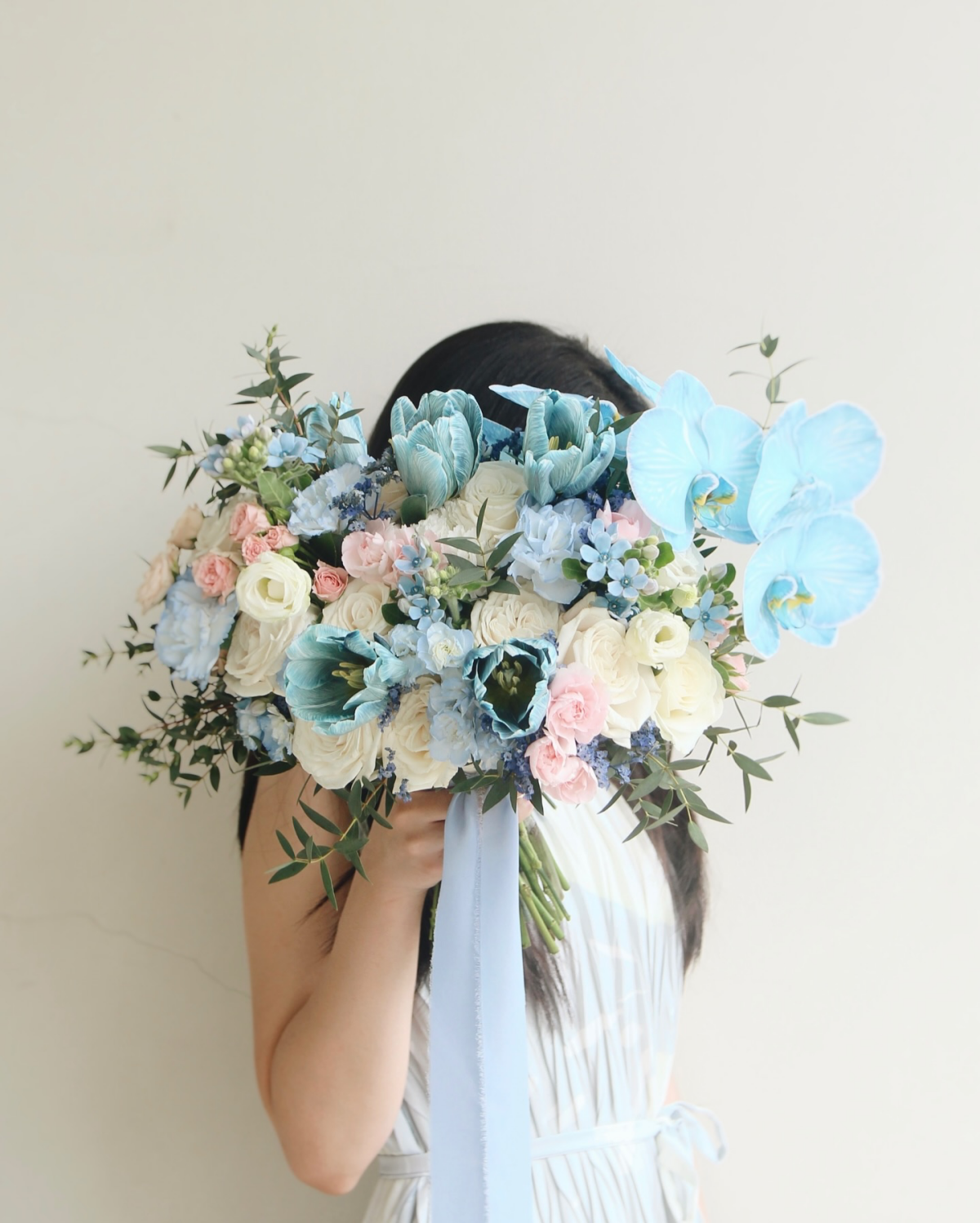
In the language of flowers, a gift of an orchid has long symbolized rare and delicate beauty. For a wedding, it carries a powerful message of luxury, strength, and magnificent love.

I love the idea of orchids, but can they be matched to a very specific or unusual wedding color, like a dusty sage green or vibrant teal?
Absolutely, but this is where artistry comes in. While orchids like Cymbidium offer some natural greens, achieving a specific shade like teal requires tinting. Florists use specialized floral sprays, such as Design Master Colortool, applying ultra-fine mists to delicately color the petals. This isn’t a simple paint job; it’s a skilled process to achieve a natural-looking, translucent color that enhances the bloom’s texture rather than masking it. It allows for perfect color harmony with your theme.
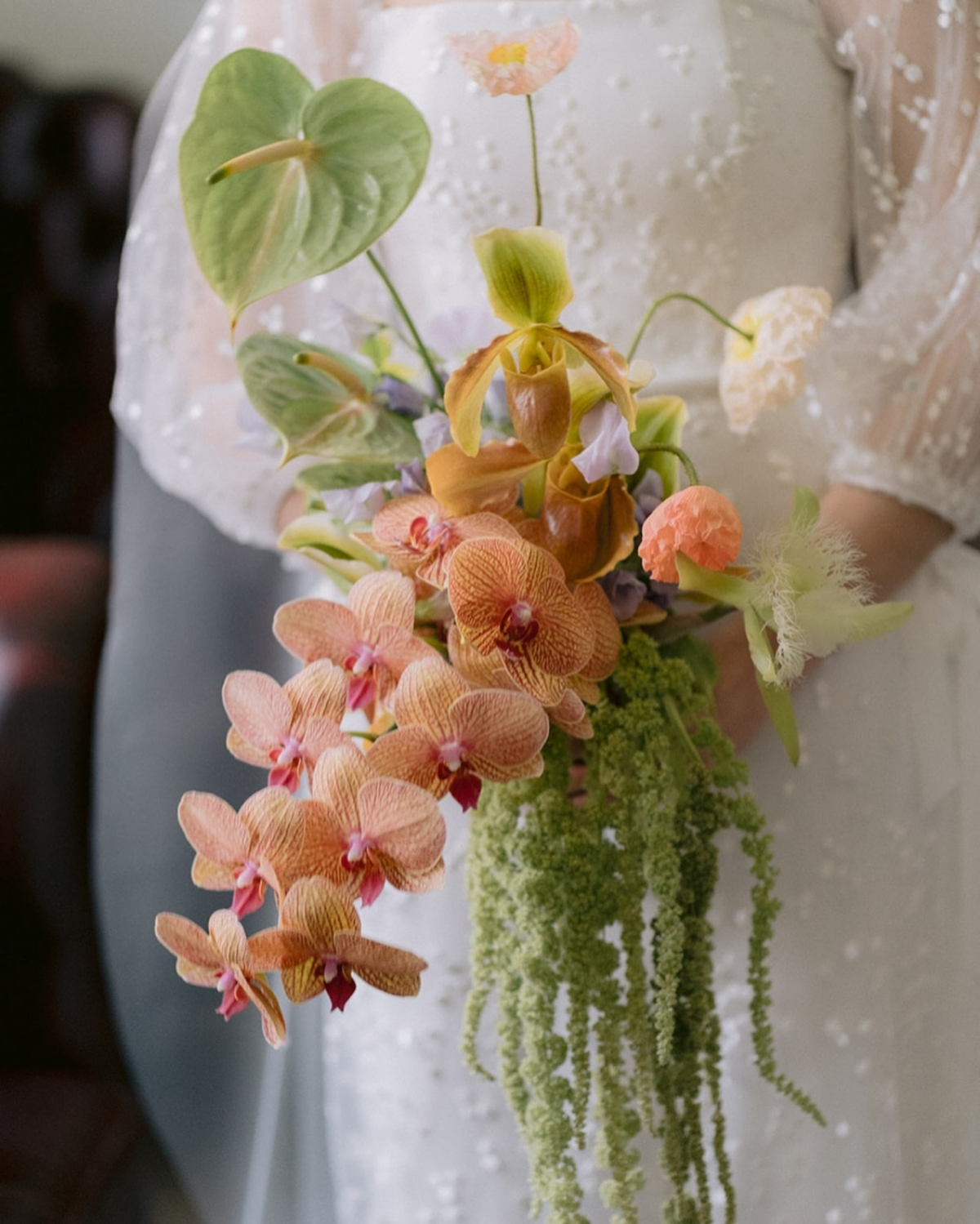
Beyond the blooms themselves, the right ribbon is crucial to complementing the bouquet’s modern elegance. A hand-dyed silk ribbon from a supplier like Froufrou Chic adds a soft, ethereal texture that contrasts beautifully with the sleek structure of Phalaenopsis orchids. For a more minimalist look, a simple, high-quality satin or velvet ribbon in a complementary color can anchor the design without overwhelming it.

- To preserve their fresh, dewy appearance, have your florist lightly mist the orchids with water an hour before the ceremony.
- When you aren’t holding the bouquet, place it in a vase with a small amount of water, ensuring no ribbons are submerged.
- After the wedding, you can try to preserve a few Cymbidium or Dendrobium blooms by pressing them or using silica gel for a 3D keepsake.
A critical note on temperature: Remember that most orchids are tropical natives. They are extremely sensitive to cold. Never store your bouquet in a refrigerator, as this can cause the delicate petals to turn transparent and wilt within hours. Keep it in a cool room, away from direct sunlight and drafts, to ensure it looks perfect for its big moment.

